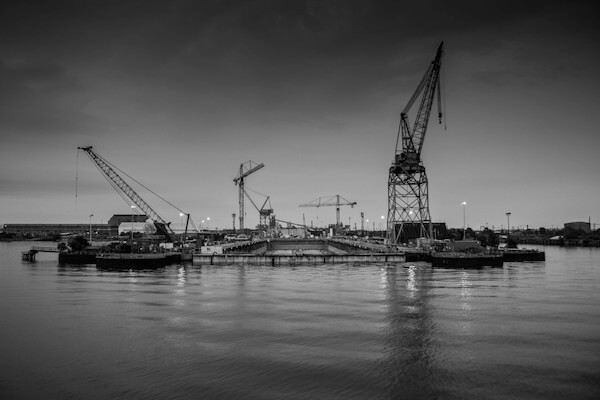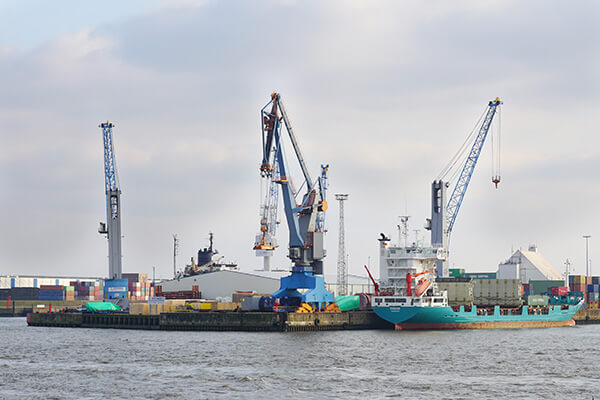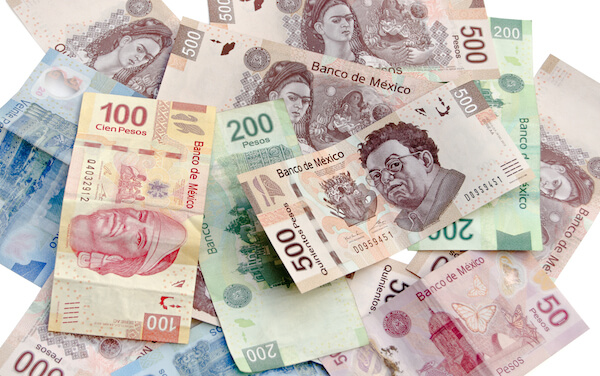Tag Archive for: PEMEX
Proposed border tax could harm U.S.-Mexico energy trade: official
/NewsA border tax floated by aides to U.S. President Donald Trump is “not a good idea” for bilateral energy trade, a senior Mexican official said on Wednesday, also confirming that Mexico’s second-ever deepwater oil auction would happen this year.
A 20 percent border tax on Mexican imports to the United States has been pitched by the Trump administration as one way to force Mexico to pay for a new border wall, a top campaign promise.
Separately, a so-called border adjustment tax has been proposed by the new administration and its Republican allies in Congress that in theory would tax imports but not exports.
Both proposed taxes face opposition from U.S. oil refiners and automakers, among other sectors, warning they would raise consumer prices.
“We don’t see this kind of a tax as a good idea,” said Aldo Flores, Mexico’s deputy energy minister for hydrocarbons.
“Our position continues to be that free trade and the free flow of these goods has benefited both countries, strengthening the energy security of both,” he said.
Relations between the United States and Mexico are especially tense as Trump has threatened to upend nearly a quarter century of free trade, deport millions of illegal immigrants and build his signature border wall while getting Mexico to pay it, something the Mexican government has said it will not do.
For decades, the two neighbors have nurtured a robust cross-border energy trade, with crude oil produced by state company Pemex sold to U.S. refiners, while American producers sell natural gas and fuels like gasoline and diesel to Mexican buyers.
Last year, the total value of U.S. energy exports to Mexico totaled $20.2 billion, while Mexico exported mostly crude oil worth $8.7 billion to the United States, in a reversal of the historic balance of energy trade between the two countries, according to U.S. Energy Information Administration data.
Similarly, Mexico’s crude shipments could be pressured if the United States approves the new Trump-backed permit for TransCanada’s (TRP.TO) proposed Keystone XL pipeline and the project brings new supplies of Canadian heavy crude to U.S. refineries.
“Supposing that (the pipeline) is completed, that changes the competitive playing field for Mexican crude,” said Flores, adding that producers of oil in Mexico would have to be more creative in how they market their output.
DEEPWATER AUCTION
Mexican and Canadian heavy crudes have competed for years for buyers among U.S. Gulf coast refineries.
While Mexico’s oil regulator is planning three new oil auctions later this year, covering shallow water and onshore fields, a new deepwater auction is also planned.
“It will be toward the end of the year,” said Flores, who also sits on the Pemex board and took over as deputy energy minister in August.
He declined to specify where the deepwater blocks would be located.
Flores added that a first-ever auction of shale oil and gas blocks would “probably” be scheduled, noting that necessary regulations would be published before the end of the year.
Last year, Mexico concluded four first-ever oil auctions, part of a landmark energy opening finalized in 2014 that ended Pemex’s decades-long monopoly, including a December deepwater auction that awarded 10 blocks to a wide range of international oil majors.
While Mexican crude output has declined over the past dozen years from a peak of 3.4 million barrels per day, Flores said he expected output to total 1.9 million to 2.0 million bpd in 2018, similar to a forecast of 1.94 million bpd for this year.
David Alire Garcia and Adriana Barrera / Reuters
Wed Feb 15, 2017 | 8:09pm EST
BHP Billiton ticks $2.8 billion Gulf oil deal
/NewsBHP Billiton has approved its share of the $US9 billion ($11.8bn) Mad Dog 2 offshore oil project in the US Gulf of Mexico, six weeks after operator BP ticked off on the project.
For BHP, its 23.9 per cent stake in the 140,000 barrels per day platform will set it back $US2.2bn ($2.8bn) and offset some of its declining oil production from 2021-22 when oil starts to flow.
“Mad Dog Phase 2 is one of the largest discovered and undeveloped resources in the Gulf of Mexico, one of BHP Billiton’s preferred conventional deepwater basins,” said BHP’s Houston-based petroleum president Steve Pastor.
“It offers an attractive investment opportunity for BHP Billiton and aligns with our strategic objective to build our conventional portfolio through the development of large, long-life, high-quality resources.”
BHP’s petroleum unit is focused on conventional oil after $US20bn of US shale acquisitions in 2011, and nearly as much spending since, have failed to deliver expected returns because of subsequent falls in oil and gas prices. Mad Dog 2 was originally expected to cost $US20bn but after going back to the drawing board three years ago, the joint venture, which also includes Chevron, has shaved more than 50 per cent off the costs.
According to Deutsche Bank estimates, the Mad Dog stake is worth $US866m of value for BHP, which is also expanding in the Mexican waters of the Gulf.
Shortly after BP approved Mad Dog, BHP beat BP in a $US1.2bn bid to partner Mexico’s national oil company, Pemex, in the Gulf, making it the first company to do so since the Mexican industry was nationalised in 1938.
The deal on the known 485 million-barrel Trion oil discovery, about 30km from Mexico’s sea border with the US, delivers BHP a near-term development opportunity in partnership with Pemex, which the Mexican government estimates could cost $US11bn.
First production at a daily rate of 120,000 barrels a day by 2022 would be possible by the joint venture — BHP (60 per cent operator) and Pemex (40 per cent).
Mexico undid Pemex’s oil industry monopoly in December 2013 under a reform agenda designed to bring in foreign capital and expertise to accelerate the pace of development, particularly for the backlog of projects in the deepwater oil fairways of the Gulf of Mexico. Macquarie estimates that Trion will cost $US11bn to develop. The bank forecasts that BHP’s petroleum production will slide from 132 million barrels of oil equivalent this financial year to 113.4 million in 2020-21. BHP is due to report first-half profits on February 21.
RBC is expecting BHP to log underlying net profit of $US3.11bn, up from $US514m a year earlier and its interim dividend to fall to US14c a share, down from US16c.
Copyright: The Australian
What’s Next for Mexico’s Energy Sector?
/NewsMexico’s recent deepwater bidding round marked a major milestone for the country in its transformation of its energy sector. However, more work is needed to prepare Mexico and its state energy firm, Petroleos Mexicanos (PEMEX), for competition in the global oil market.
The success of Mexico’s Round 1.4 deepwater bidding compared with other Round 1 bids shows that major international oil companies were waiting for the right properties and fields to be bid out, Juan Francisco Torres Landa R., partner with the Mexico City office of law firm Hogan Lovells, told Rigzone. The award of fields to key global industry players in the deepwater round, and PEMEX’s farm-out agreement with BHP Billiton, would not have been possible a few years ago.
Both PEMEX and Mexican government officials deemed the deepwater auction process and results as a major success. However, government officials from 2013 to 2015 expressed a “naïve optimism” regarding the production and reserve replacement and short and mid-term impact of upstream reform. It wasn’t until last year that officials realized that the upstream auctions will have little effect on production and fiscal revenues during this decade, Adrian Lajous, a fellow with Columbia University’s SIPA Center on Global Energy Policy, stated in a Jan. 9 research paper on Mexico’s deepwater auctions.
“The compounding impact of low oil prices and falling oil production on public finance and particularly on the financial position of PEMEX has forced the oil industry to limit debt and drastically cut expenditures,” Lajous said. “The mid-term consequences of these constraints should not be underestimated.”
Despite president-elect Donald Trump’s controversial comments on building a wall along the U.S.-Mexico border and tough talk on immigration, Mexico still wants the United States investing in its energy sector, Antonio Garza, U.S. ambassador to Mexico during the George W. Bush Administration and now Counsel in the Mexico City office of the White & Case LLP, told Rigzone.
“The U.S. energy sector is too dynamic,” Garza said. “There is far too much strategic expertise and know-how not to want them involved. I think the response of Mexican leadership, the Mexican private sector and the Mexican people would [be that] the U.S. energy sector is best-in-class – of course, they’re welcome. Of course, we want them to participate.”
However, companies looking to invest in Mexico face some tough economic headwinds. Companies buying long are still preserving cash, Garza explained. From the standpoint of energy, it’s just going to take time to see where the energy sector and economy is over the year and early 2018.
“They’re still very cautious about major capital expenditures and to the extent that they’re going to be doing much with their capital expenditures, I think it’s going to be in domestic plays or plays where they’re already somewhat vested or have been active before.”
Still, U.S. energy companies are the best positioned proximate to this market.
What Could Be Next for Mexico’s Energy Sector
The outlook for Mexico’s energy sector could be impacted by the 2018 president elections and its regulatory regime.
It’s too early to tell what the outcome of Mexico’s 2018 presidential elections will be. But the mood in Mexico is that a left-wing presidency is more likely than ever, Duncan Wood, director of the Woodrow Wilson International Center for Scholars, told Rigzone. This shift is due to corruption scandals that have tarnished the image of current Mexican President Enrique Pena Nieto. Energy reform has also been unpopular in Mexico. Wood said he expected energy reform to become even more unpopular with the liberalization of gasoline prices in 2017, which would cause gas prices to rise.
Leftist candidate Andres Manuel Lopez Obrador has consistently opposed energy reform, Wood stated. Manuel believes in taking a more nationalistic approach to the energy sector.
“At the same time, he’s a pragmatist and actually understands the basics of the national economy and the need to attract investment,” Wood added.
Whoever succeeds Pena Nieto is also unlikely to have the votes in Congress to repeal the constitutional reform. But the new president could slow energy reform momentum by simply cancelling future bidding rounds, and taking steps to create a business climate less friendly for investment. Cancelling existing contracts would be difficult and costly for the Mexican government, as investors are protected by international and bilateral treaties, Wood said.
“It also would destroy confidence among investors,” Wood said. “I don’t see anybody taking that risk.”
Currently, the oil and gas industry and the government are both trying to ensure that Round 2 of bidding for exploration and production opportunities will be a bigger success and move forward in 2017. Given that the timing and sequencing of the Round 1 auctions has been severely affected by global oil industry conditions, Lajous argues that the Mexican government could have had better results by conducting a more rigorous selection of assets and a slower paced calendar could have offered better results under these circumstances.
“The institutional stress under which policy makers operated allowed little time to evaluate and more fully understand the results of each auction and pose alternative contractual options in the following ones,” Lajous stated. “The argument that they had no other options is mistaken.”
One issue that Mexico needs to address is its regulatory capacity, Wood said. Wood believes that the Mexican government should focus not only on expanding the workforce of the nation’s energy regulatory agencies, but investing in regulatory processes as well. This investment will ensure that permitting takes less time, shortening the amount of time to first oil.
“This is to ensure agility and to make investors happy with the way their contracts are being applied,” Wood said. “If not, they’ll tell those stories to other investors, and other investors won’t come, and Mexico becomes less competitive.”
PEMEX Faces Further Challenges in Evolving for Competition
Mexico’s state energy firm PEMEX is on the right track long-term, but will continue to face challenges in 2017. PEMEX’s biggest challenge is its business culture, which still tends to think like a government agency rather than an oil company, Wood explained.
“What the government should have done was show that PEMEX is actually healthier and stronger at the beginning of the reform process,” Wood said. “But time has run out for the government to show that.”
PEMEX has dealt with international companies before, but it wasn’t really competing with those companies under the previous regulatory environment. Landa believes that PEMEX will need to significantly reduce its workforce if it wants to meet the margins that public companies will impose and new framework for the oil and gas industry.
“It’s a good idea to make sure that PEMEX is not a politically-driven company, but one where economic efficiency is a major driving force,” Landa said.
How long will it take for PEMEX to complete its evolution hinges on a number of factors? The current CEO has made good changes; but the president who will follow Pena Nieto will likely want to bring in a new PEMEX CEO, Wood said. If the current CEO remains, the meaningful changes within PEMEX will continue to impact its bottom line over the next five years. But if somebody comes in with a different plan, that could delay everything.
Wood predicts that PEMEX’s production will fall below 2 million barrels per day (MMbpd) over the next 12 to 18 months because of Mexico’s aging oil and gas fields. Optimistically, Mexico’s production will climb above 2 MMbpd in 2020. Wood thinks that production up 2 MMbpd is too ambitious, but between 2.5 MMbpd and 3 MMbpd.
Copyright: Rig Zone
Crippled Latin Oil Giants Get No Miracle Cure in Post-OPEC Rally
/NewsFor the three titans of Latin American oil — Pemex, PDVSA and Petrobras — last week’s OPEC-driven price rally won’t be enough to halt a slow descent from the ranks of international crude heavyweights.
Even as news of the cartel’s 1.2 million-barrel-a-day output cut spurred the steepest three-day oil gain in 15 months, the biggest Latin American producers remain hobbled by financial, political, technical and structural problems. Mexico and Brazil have been turning to outside investors to help boost output, with Mexico on Monday offering up stakes for the first time to drill in its deep waters.
Oil prices are an especially pressing issue for the behemoths responsible for large chunks of their local and national economies, all while supplying one of every 13 barrels of crude produced around the globe every day. Unlike North American explorers who were free to fire workers and abandon costly, high-risk projects as crude collapsed, the Latin companies operate under close bureaucratic controls that hinder their ability to respond to market forces, said Thomas McNulty of Navigant Consulting Inc.
“Higher prices are always a good thing but these are state-owned quasi-companies that have tremendous social obligations to their countries and little freedom to take rational cost-cutting steps,” said McNulty, director of Navigant’s valuations and financial risk management practice. “U.S. companies have to pay taxes, sure, but they don’t have to build schools.”
Petroleo Brasileiro SA said it isn’t changing its business plan in response to OPEC’s production agreement. Mexico’s Energy Ministry said it won’t change its auction plans because of OPEC. Petroleos de Venezuela SA, as the Venezuelan state-oil company is formally known, didn’t respond to requests for comment.
Brent Surge
Brent crude, the international benchmark, surged as much as 15 percent in the three trading sessions following a Nov. 30 meeting at which the Organization of Petroleum Exporting Countries agreed to individual production cuts for the first time in eight years. The three-day rally was the largest since August 2015. Brent dipped to a 12-year low around $27 a barrel as recently as January; since then, the price has doubled to more than $54.
“Higher prices are positive for these companies to varying degrees,” said Lucas Aristizabal, a senior director at credit-rating company Fitch Inc. For Petroleos Mexicanos and PDVSA, the benefits are diminished by staggering debt loads that eat up cash that could otherwise go toward drilling to sustain production and replenish spent reserves, he said.
“Pemex needs much higher prices than this under the current taxation scheme to become cash-flow neutral while investing enough to replenish reserves,” Aristizabal said.
Mexican Oil
Once the world’s third-largest oil producer, Mexico now pumps less than the U.S. state of Texas, thanks to dwindling output from the once-gargantuan Cantarell field and lack of investment in new drilling technology. Aristizabal estimated the Mexican company, whose nearly $100 billion in debt is more than twice that of Exxon Mobil Corp., needs crude to fetch $80 a barrel to $100 a barrel to escape it downward spiral.
Mexico’s deep-water oil auction is designed to attract international oil giants to develop offshore production. It’s a crucial test of foreign investment, with Mexican oil output forecast to fall below 2 million barrels a day next year, the lowest level since 1980.
Pemex CEO Jose Antonio Gonzalez Anaya praised the OPEC agreement and price rise as “a breath of fresh air.
“It’s a good development for the energy market and for Pemex,” he said in a Dec. 1 interview on Bloomberg Television.
PDVSA Payments
PDVSA, facing $6.4 billion in debts coming due next year, won’t get much relief from its liquidity crisis, despite the nascent crude rally, Aristizabal said. Company Chairman Eulogio Del Pino said the cut may push oil prices to $70 in six months. Added cash is important as the producer uses a 30-day grace period to pay interest due on a 2035 bond. Venezuelan President Nicolas Maduro has blamed the U.S. Treasury and Citigroup Inc. for the delayed payment.
Venezuela is one of only two cartel members in the Western Hemisphere, and PDVSA will be required to cut some output. That means abandoning some of the potential upside from the price increase, Aristizabal said.
Petrobras, which has been enmeshed in Brazil’s biggest corruption scandal, is in a better position to take advantage of rising prices than it was in 2011 when crude surged past $100 a barrel. The previous Brazilian administration of Dilma Rousseff pressured the state-controlled company to keep domestic gasoline and diesel prices below international levels in an effort to contain inflation, costing an estimated $35 billion in fuel subsidies in the middle of a commodities boom.
Fuel Sales
The Rio de Janeiro-based producer has been selling fuel at a premium for the past two years, partially recovering the losses from import subsidies. In October, the company set a policy of monthly revisions to guarantee prices remain above import costs. Petrobras reiterated its commitment to keep fuel prices above international parity in an e-mailed response to questions.
Rising prices will also guarantee the viability of deep-water fields that are estimated to hold billions of barrels of oil. Chief Executive Officer Pedro Parente has said the company’s break-even cost is around $40 a barrel. Petrobras has been in talks with potential bidders, including Total SA, for joint ventures to get oil from the so-called pre-salt areas offshore.
Brazil’s energy ministry has said it has no authority to set production limits for Petrobras and other companies producing in Latin America’s largest economy, offering the potential for it to capitalize with more output as OPEC members scale back.
Copyright: Bloomberg
Pemex lays out the map for the road ahead
/NewsMexico’s state oil company Pemex has laid out the broad strokes of a new strategy that could dramatically expand its use of partnerships in the Mexican exploration and production sector over the next five years.
The plans open up the possibility of more than 160 new opportunities for private companies over the next two years.
Pemex has already announced plans for the farm-down this year of an interest in the deep-water Trion discovery, and said 2017 would also bring other farm-outs in the shallow-water area of Ayin-Batsil and the onshore areas of Ogarrio and Cardenas-Mora. The company’s latest 2016-2021 business plan also labels 2017 as its target date for partnerships in the extra-heavy oil field of Ayatsil-Tekel-Utsil and the tricky but promising region of Chicontepec, as well as seven more unspecified onshore areas in the northern and southern parts of the country.
The strategy also sets out ambitious plans for 2018, with six deals proposed for shallow waters in the northern part of the country, 64 onshore agreements in the north and south and 86 natural gas contracts in the Burgos and Veracruz areas.
“Pemex’s business plan is a good roadmap, but short and medium-term challenges remain,” political risk consultancy Eurasia Group wrote in a note. “Operational challenges will remain substantial and many of the projects are likely to face delays.”
Pemex only recently gained the ability to take on operating partners in its projects as part of reforms passed in 2014 to end its nearly 80-year monopoly.
The state-led company has touted its new ability as being crucial to helping make up for its declining production curve and bringing in new technology and best practices.
A small number of farm-outs were announced with the passage of implementing legislation in 2014, but details since then have been scant other than Trion. Industry executives have called for more opportunities.
When it comes to exploration rights, by law Pemex must sign contracts for stakes in its projects via an open public bid round run by Mexican oil regulators, not just by direct negotiations.
Pemex did not provide many details on the projects mentioned, merely offering a list of “business opportunities” as part of its roadmap forward.
The strategy was unveiled as Pemex comes under pressure to show progress and activity on areas assigned in the process known as Round Zero.
That process divvied up what fields the Mexican player could retain following reforms but, without activity, acreage reverts back to regulators.
“The plan is very ambitious but I think it’s rightly so,” said Francisco Monaldi, adjunct professor of political economy of oil at Rice University in Houston, suggesting executives aim to position Pemex to take full advantage of the abilities offered by the energy reform.
Chiefly, Pemex will need to find a “winning formula” that can incentivise new operators to come in, and the process for the deep-water Trion block may end up being a model for that going forward, according to Luis Miguel Labardini, partner at Marcos y Asociados in Mexico City.
Ongoing discussions surrounding that joint operating agreement, with lots of feedback from international oil companies, led to the jettisoning of provisions that could have limited the autonomy of new partners, such as the ability of Pemex to unilaterally remove the new operator despite holding a minority stake in the project.
Some of the areas mentioned, notably the Ayatsil-Tekel-Utsil extra-heavy oil field and the Chicontepec region, also have higher production costs that could make economics difficult if lower oil prices persist.
Experts also acknowledged future political risk. The term of energy reform proponent President Enrique Pena Nieto is up in 2018, and the administration at present stands in a weak position due to multiple corruption scandals and its inability to stem violence from drug cartels.
Copyright: Up Stream
Mexico 2017 Budget Cuts To Squeeze Pemex, Primary Surplus Eyed
/NewsMexico’s government on Thursday set out plans for a bigger-than-anticipated cut in public spending in 2017, with struggling state oil company Pemex earmarked for a 100 billion peso ($5.36 billion) reduction in funding.
New Finance Minister Jose Antonio Meade said the budget foresaw planned spending cuts of 239.7 billion pesos ($12.83 billion), targeting a primary surplus of 0.4 percent of gross domestic product (GDP) in 2017. It would be the first such surplus since 2008.
Of the cuts, 100 billion pesos fall on Pemex, which is already facing a funding squeeze and has racked up multi-billion dollar losses for years. Since the government ended its oil and gas monopoly nearly three years ago, Pemex has faced stiff competition from the private sector.
“Pemex is making the biggest contribution to the cuts,” Meade said, presenting the budget proposal to Congress a day after he was sworn in as finance minister following the resignation of Luis Videgaray.
In late 2013, the government threw open the industry to private capital to reverse a protracted slide in oil production, but falling crude prices have undermined those efforts.
Currently running at some 2.16 million barrels per day (bpd), Mexican oil production will slip to an average of 1.928 million bpd in 2017, the budget forecasts. The last time Mexican crude output fell below 2 million bpd was in 1980.
Still, the budget does foresee changes aimed at easing Pemex’s heavy tax load.
Less than two years remain before the next presidential election, and President Enrique Pena Nieto’s government is struggling to ramp up economic growth, having fallen well short of its original ambition to achieve annual rates of 5-6 percent.
Hurt by uneven U.S. demand for its goods, Mexico’s economy shrank in the second quarter for the first time in three years.
Next year, the budget foresees growth of between 2 and 3 percent, compared with 2.0-2.6 percent in 2016.
Despite the 2017 cuts – well above the 175.1 billion the government eyed in April – non-discretionary spending was expected to rise by 144.3 billion pesos, inflated by higher financing costs and a slide in the peso’s value.
Next year the government foresees an overall deficit of 2.9 percent of GDP, 0.6 percentage points less than the 2016 target.
The budget foresaw the peso averaging 18.2 per dollar in 2017, and an average price of $42 per barrel for Mexican crude, in line with the government’s hedging program. ($1 = 18.6600 Mexican pesos)
Copyright: Rig Zone
Mexico’s Pemex must take Minimum 45 pct Stake in Deep Water Venture
/NewsMexico’s oil regulator on Wednesday said state-owned oil company Pemex must take a minimum 45 percent stake in its first-ever proposed joint venture with would-be private partners to develop oil reserves in the Gulf of Mexico’s deep waters.
Global oil majors are widely expected to bid in the December auction to help develop the Trion light oil field in the Perdido Fold Belt just south of Mexico’s maritime border with the United States.
Companies such as Royal Dutch Shell and Exxon Mobil operate lucrative developments in nearby U.S. waters while Mexico has yet to achieve commercial production on its side of oil-rich Perdido due to a lack of technical expertise to tap such fields.
The call for bids to partner with cash-strapped Pemex on Trion follows the constitutional energy reform enacted in 2013 which promised to reverse a decade-long slump in crude production by luring new players to explore for and produce oil.
The regulator said the Trion joint venture will be bid out in the form of a license contract, which is similar to a concession, and will include two operators, one of which must have between a 30 to 45 percent stake in the project.
Interested bidders have until Sept. 15 to pre-qualify for the auction by meeting both financial and technical minimum requirements, while the final version of the contract and bid terms will be published on Sept. 30.
The license contract to partner with Pemex on the project will be awarded on Dec. 5. Mexico will also auction 10 separate deep water fields, including four that surround Trion, in December.
Under the terms of the energy reform, Pemex can partner with companies in exploration and production projects, but rather than being allowed to pick its partners, they will instead be selected by an auction run by the oil regulator, known as the National Hydrocarbons Commission.
The partnership will allow Pemex to share the investment needed to successfully develop the field, the company’s first major deep water oil project.
The Trion field holds some 480 million barrels and will require about $11 billion worth of investment.
The field covers about 483 square miles (1,250 square km) and is located under more than 8,202 feet (2,500 meters) of water.
Copyright: Rig Zone
KKR’s Mexican Oil Deal Kicks Off New Era in Funding for Pemex
/NewsThe biggest corporate issuer of bonds in emerging markets appears to be taking a breather.
Petroleos Mexicanos, the state-owned oil company known as Pemex, is finding new ways to raise cash – including a deal with private-equity firm KKR & Co. – as it seeks to limit how much in liabilities it takes on. The company has sold just $8.15 billion in peso and foreign-currency bonds in 2016, and its chief executive said late last month that it’s almost done with selling notes for the year, putting it on course for its lowest issuance in four years, data compiled by Bloomberg show.
It makes sense that Pemex would scale back its bond issues, analysts say, given that its $95 billion debt load is already raising red flags after 14 straight quarterly losses and 11 years of falling output. But the shift in its financing strategy comes with a price.
Pemex agreed to an implied interest rate of 8 percent in a $1.2 billion sale-leaseback deal with KKR last month, according to a person familiar with the deal. While that allows it to raise capital without technically adding to its liabilities, it compares with a 5.125 percent coupon on its most recent issue, a seven-year 900 million-euro bond. The yield on that bond has since fallen to 3.73 percent.
“If things were perfect, they wouldn’t have gone down this road,” said Luis Maizel, who helps manage $5.5 billion of assets, including Pemex bonds, as co-founder of LM Capital Group in San Diego. He said the KKR deal and others like it take seniority over bonds. Even so, “at the end of the day, we all want the company to move forward, keep selling, keep producing and so we bite the bullet.”
Copyright: Rig Zone
Mexico Plans Next Bidding Round For Energy Opening By End-July
/NewsThe next bidding round in the opening of Mexico’s oil and gas sector will be called by the end of July and consist of 15 shallow water blocks for exploration and extraction in the Gulf of Mexico, Energy Minister Pedro Joaquin Coldwell said.
Coldwell announced the round, denominated 2.1, at an event in the northern city of Monterrey on Wednesday.
The following round, or 2.2, would be called by the end of the summer and comprise 14 onshore blocks for exploration and production in the gas-rich Burgos basin in the north of the country as well as in southeast Mexico, Coldwell added.
Mexico ended the oil and gas monopoly of national oil company Pemex at the end of 2013 to open up the industry to more private sector investment. However, the auctions of oil and gas blocks have been complicated by a sharp drop in crude prices.
Crude futures on Wednesday hit their highest levels in 2016, beyond $50 per barrel. Coldwell said it was very hard to forecast whether the recovery in prices would last
Copy right: Rig Zone

Latest News
 Breaking Barriers and Building the Future18 March, 2025
Breaking Barriers and Building the Future18 March, 2025 Fundamental factors to strengthen Pemex12 August, 2019
Fundamental factors to strengthen Pemex12 August, 2019 Offshore Project Development: The Road to First Oil26 July, 2019
Offshore Project Development: The Road to First Oil26 July, 2019









